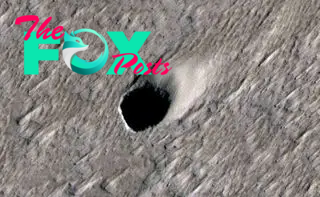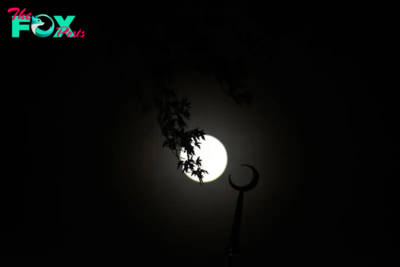Science
Mysterious 'hole' on Mars could be future home for astronauts
A Mysterious pit on the flank of an ancient volcano on Mars has generated excitement recently because of what it could reveal beneath the surface of the Red Planet. Here's what that means.
First things first, the pit, which is only a few meters across, was actually imaged on Aug. 15, 2022 by NASA's Mars Reconnaissance Orbiter, which was about 159 miles (256 kilometers) above the Martian surface at the time. This hole in the ground is also not alone. It's one of many seen on the flanks of a trio of large volcanoes in the Tharsis region of Mars. This particular pit is found on a lava flow on the extinct volcano Arsia Mons, and appears to be a vertical shaft. That raises a question: Is it just a narrow pit, or does it lead to a much larger and remarkable cavern? Or, could it perhaps be a really deep lava tube formed underground long ago when the volcano was still active?
Related: Will future colonists on the moon and Mars develop new accents?
There are several reasons why pits and caves on Mars are of interest. For one, they could provide shelter for astronauts in the future; because Mars has a thin atmosphere and lacks a global magnetic field, it cannot ward off radiation from space the way that Earth does. Consequently, radiation exposure on the Martian surface averages between 40 and 50 times greater than on Earth.
The other enticing aspect of these pits is they might not just provide shelter for human astronauts; they could hold astrobiological interest in the sense that they could have been sheltered abodes for Martian life in the past — perhaps even today, if microbial life indeed exists there.
The presence of these so-called holes on the flanks of volcanoes is a big clue that they are probably connected to volcanic activity on Mars. Channels of lava can flow away from a volcano underground; when the volcano grows extinct, the channel empties. That leaves behind a long, underground tube. We see such tubes not only on Mars, but also on the moon and on Earth.

Sometimes, if the crust is thin enough, the ceiling of these tubes collapses. If a collapse happens along the tube's entire length, it forms a feature called a rille, which is a long trench commonly found on the moon and sometimes in other areas of Mars. If the tube's ceiling just collapses in small areas, however, we get pits like those imaged on Arsia Mons. Planetary scientists have also seen pit chains on the flanks of Martian volcanoes, which are linear stretches of multiple pits seemingly following the length of a lava tube.
-

 Science14h ago
Science14h agoHow to See the ‘Beaver’ Supermoon—the last of 2024
-

 Science5d ago
Science5d agoInside Capitol Hill’s Latest UFO Hearings
-

 Science5d ago
Science5d agoYou Won’t Want to Miss the Leonid Meteor Shower. Here’s How and When You Can See It
-

 Science6d ago
Science6d agoHere’s What Trump’s Win Means for NASA
-

 Science1w ago
Science1w agoWhy Risky Wildfire Zones Have Been Increasing Around the World
-

 Science1w ago
Science1w agoIt’s Time to Redefine What a Megafire Is in the Climate Change Era
-

 Science1w ago
Science1w ago4 Astronauts Return to Earth After Being Delayed by Boeing’s Capsule Trouble and Hurricane Milton
-

 Science1w ago
Science1w agoThe Elegance and Awkwardness of NASA’s New Moon Suit, Designed by Axiom and Prada


























